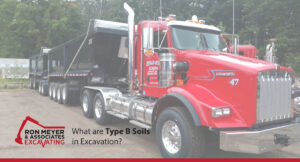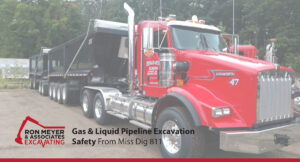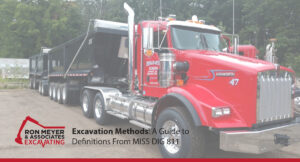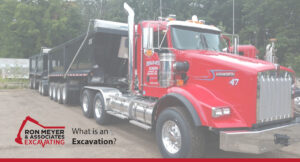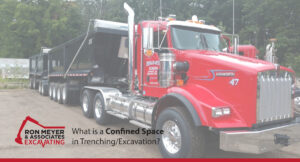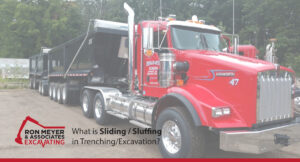Type B Soils are cohesive soils with an unconfined compressive strength greater than 0.5 tsf (48 kPa) but less than 1.5 tsf (144 kPa). Examples of other Type B soils are: angular gravel; silt; silt loam; previously disturbed soils unless otherwise classified as Type C; soils that meet the unconfined compressive strength or cementation requirements […]
Gas & Liquid Pipeline Excavation Safety From Miss Dig 811
Each year thousands of utility strikes occur in Michigan, including damage to gas and pipeline facilities. These strikes cause service outages, put the public and employees at risk, and result in costly repair bills for excavators. The information provided within this booklet can help reduce or eliminate your likelihood of strikes occurring during your upcoming […]
Excavation Methods: A Guide to Definitions From MISS DIG 811
This guide provides a definition for each excavation method – as provided by MISS DIG 811 – a Michigan Non-Profit Corporation. At Ron Meyer & Associates Excavating, we’ve been providing underground and commercial construction to private and commercial businesses for 40+ years. As the general contractor or subcontractor, our experienced foremen, equipment operators, pipe layers, […]
What is an Excavation in Construction?
According to OSHA, An Excavation is any man-made cut, cavity, trench, or depression in an earth surface that is formed by earth removal. A Trench is a narrow excavation (in relation to its length) made below the surface of the ground. In general, the depth of a trench is greater than its width, and the […]
What is a Confined Space in Trenching/Excavation?
Confined Space is a space that, by design and/or configuration, has limited openings for entry and exit, unfavorable natural ventilation, may contain or produce hazardous substances, and is not intended for continuous employee occupancy. For additional information, see OSHA Technical Manual (OTM) Section V: II. Definitions. At Ron Meyer & Associates Excavating, we’ve been providing underground […]
What is Sliding / Sluffing in Trenching/Excavation?
Sliding or sluffing may occur as a result of tension cracks. Tension cracks usually form at a horizontal distance of 0.5 to 0.75 times the depth of the trench, measured from the top of the vertical face of the trench. For a visual, see Figure V:2-1. Tension Crack. For additional information, see OSHA Technical Manual (OTM) […]
- 1
- 2
- 3
- …
- 20
- Next Page »
